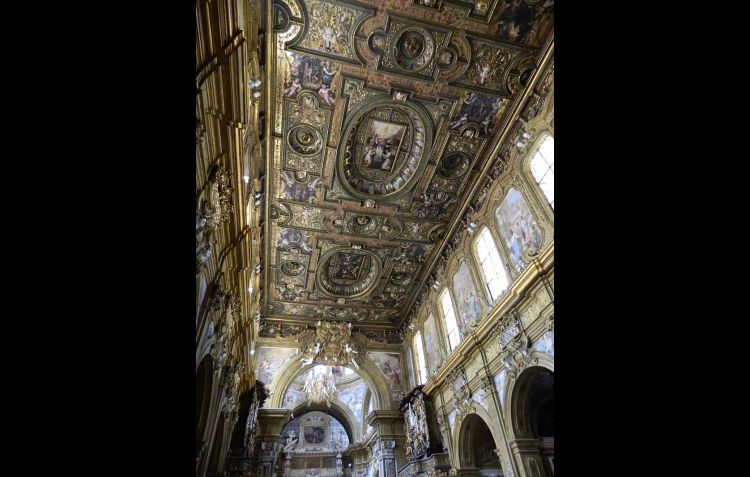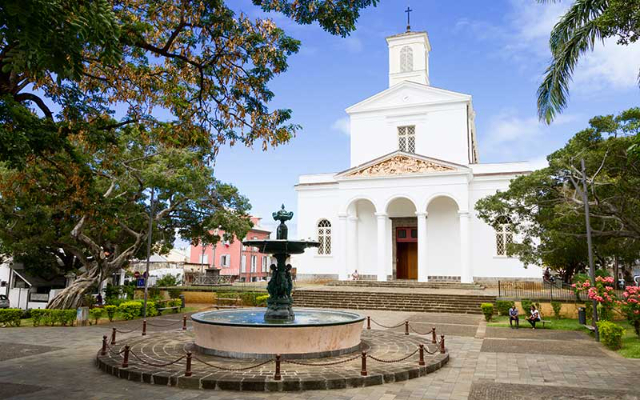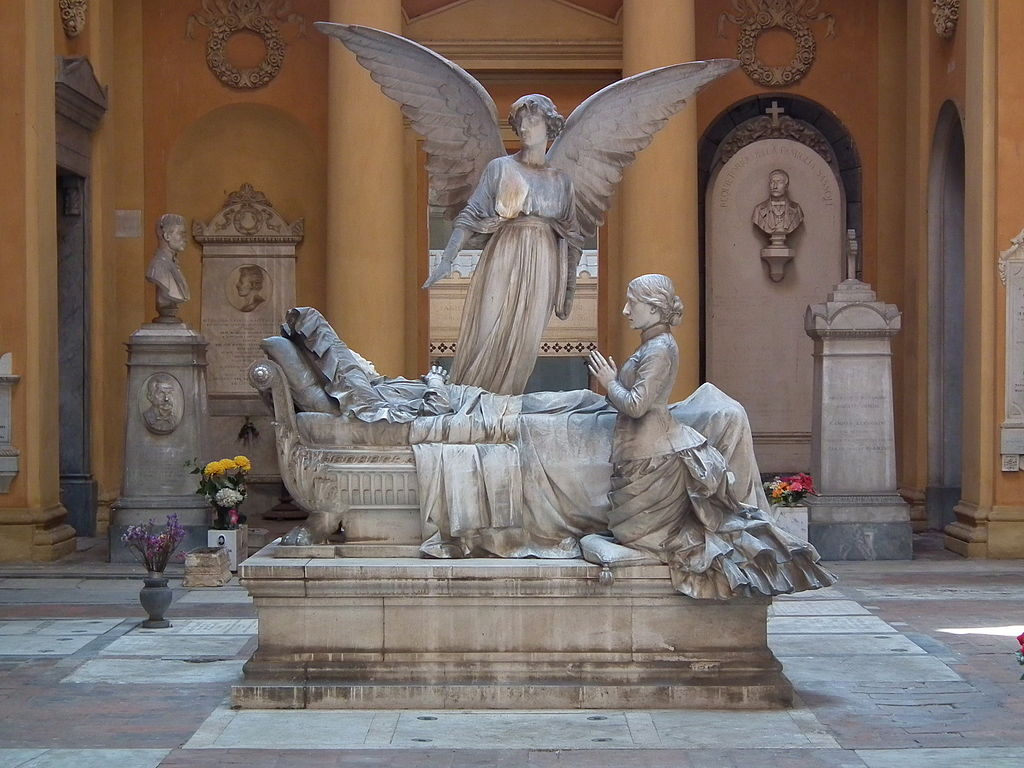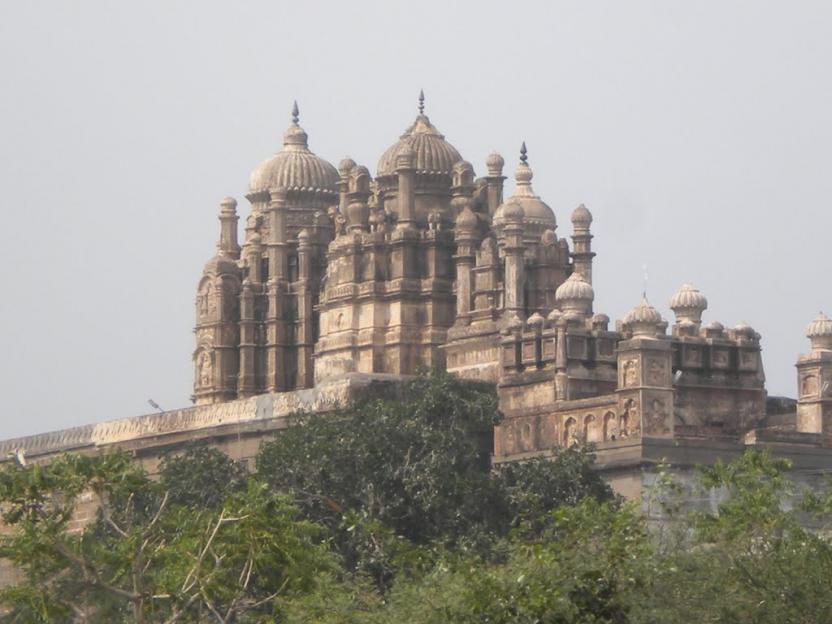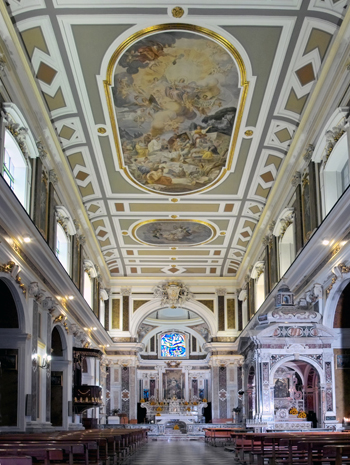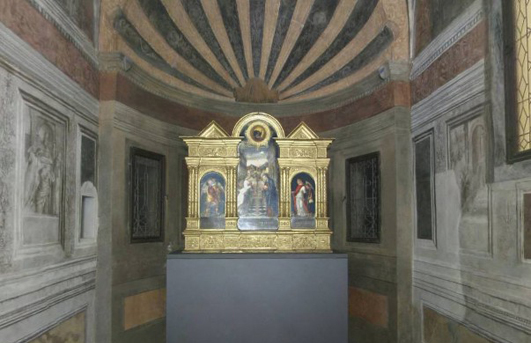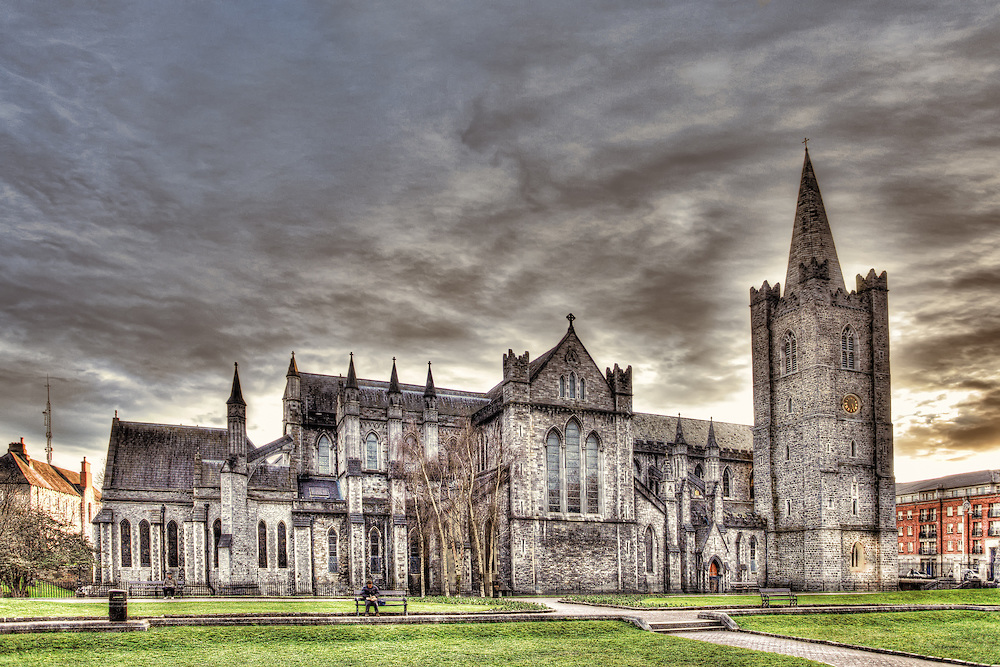The basilica stands on the street of the same name and was built on the site where, according to legend, there was already the original structure erected by St. Helena, mother of Emperor Constantine. In fact, the ruins of the pagan temple dedicated to Ceres stood in the area. Here, Basilian nuns, who had escaped in the 8th century from Constantinople with the relics of St. Gregory, founded, at the behest of the bishop of Naples Stephen II, the Fondaco di San Gregorio, which was later joined with the monasteries of St. Sebastian and St. Pantaleon in 1225. After the Council of Trent, the stricter rules of the Counter-Reformation made it necessary to build a new structure to house the nuns. As evidence of this "migration," the bridge, later to become a bell tower, connecting the two structures remains. Between 1574 and 1580, thanks to the interest of Fulvia Caracciolo and Aunt Lucrezia, Vincenzo della Monica and Giovan Battista Cavagni were entrusted with the construction of the new church and monastery, later enlarged in 1694 by Francesco Antonio Picchetti. At the end of the work, only the Idria Chapel, accessible from the cloister, remained of the ancient structure. In the 18th century the church was enriched with typical Neapolitan Baroque elements, such as stucco, marble and brass. It was also equipped with an organ and two carved wooden choir lofts by architect Niccolò Tagliacozzi Canale, who worked in the structure between 1730 and 1750.
The facade has four Tuscan pilasters, with three arched windows that were originally surmounted by a tympanum, later replaced by a third architectural order. The main portal dates from the late 16th century, and in each compartment of the three casements are carved in relief St. Lawrence, St. Stephen and the Evangelists. Past the initial atrium are memorial plaques commemorating the consecration of the church (1579), the dedication to St. Gregory Armeno, and the visit of Pius IX in 1849.
